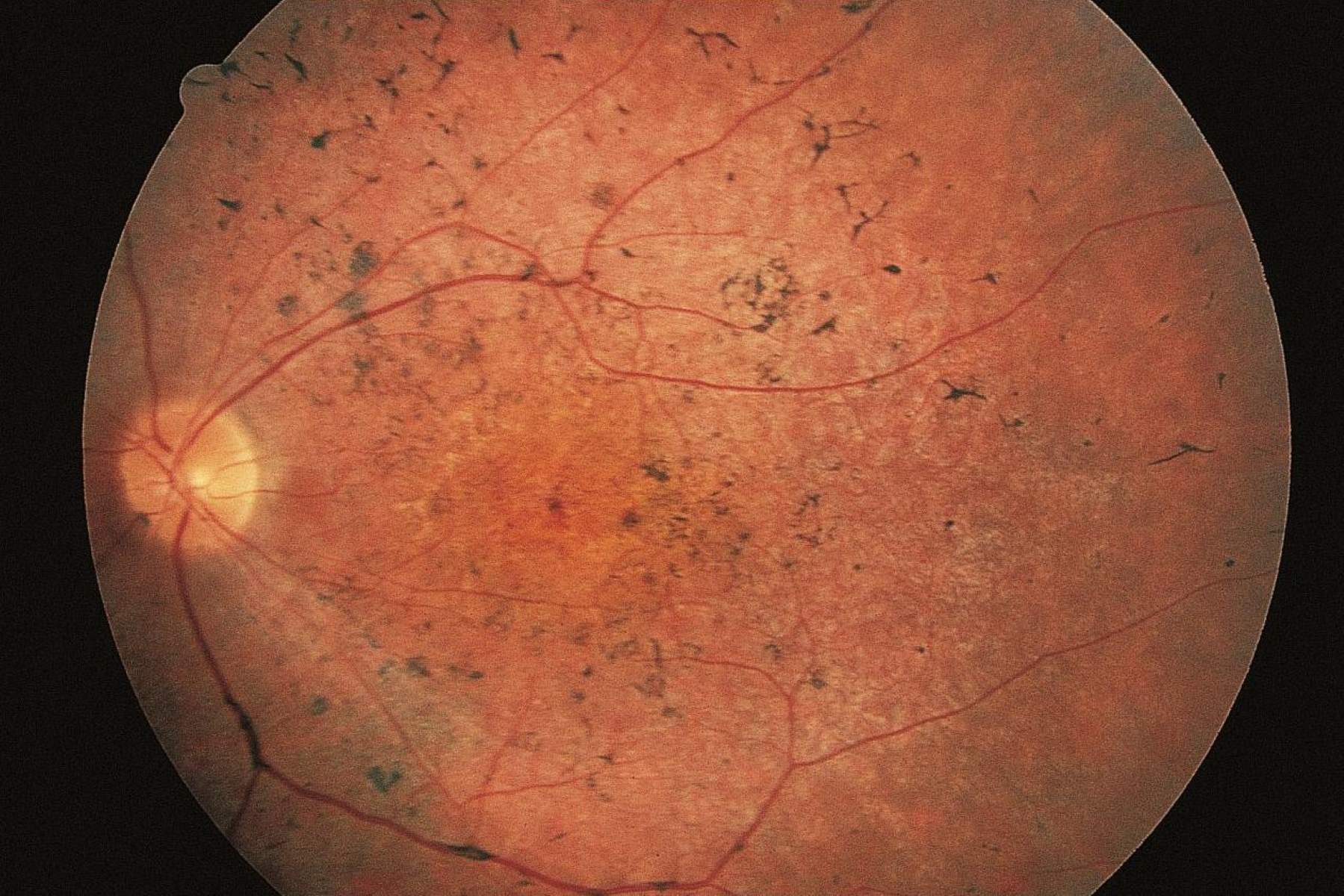
Cone dystrophy is a rare eye disorder that affects the cone cells in the retina, leading to vision problems. What causes cone dystrophy? This condition can be inherited or occur sporadically, often due to genetic mutations. People with cone dystrophy experience a gradual loss of central vision, color vision, and visual acuity. Symptoms usually start in childhood or early adulthood and can vary in severity. While there's no cure, treatments focus on managing symptoms and improving quality of life. Understanding cone dystrophy is crucial for early diagnosis and intervention, which can help slow progression and maintain vision for as long as possible.
Key Takeaways:
- Cone Dystrophy affects color vision and visual acuity, making it challenging to see fine details and distinguish colors. Genetic testing and low vision aids can help manage symptoms and improve daily life.
- Research on Cone Dystrophy is advancing, offering hope for new treatments like gene therapy and stem cell therapy. Support groups and technological aids provide valuable assistance for individuals living with this condition.
What is Cone Dystrophy?
Cone Dystrophy is a rare eye disorder affecting the cone cells in the retina. These cells are crucial for color vision and sharp central vision. Let's dive into some fascinating facts about this condition.
-
Cone Dystrophy affects the cone cells in the retina, which are responsible for color vision and visual acuity. This means people with this condition often struggle with distinguishing colors and seeing fine details.
-
There are two main types: stationary and progressive. Stationary Cone Dystrophy remains stable over time, while progressive Cone Dystrophy worsens, leading to more severe vision loss.
-
Symptoms usually appear in childhood or early adulthood. However, the age of onset can vary widely among individuals.
-
Common symptoms include decreased visual acuity, photophobia (sensitivity to light), and color vision defects. These symptoms can significantly impact daily activities like reading and driving.
-
Cone Dystrophy can be inherited in different ways, including autosomal dominant, autosomal recessive, and X-linked patterns. This means the condition can run in families, affecting multiple generations.
How is Cone Dystrophy Diagnosed?
Diagnosing Cone Dystrophy involves several tests and examinations. Here are some key facts about the diagnostic process.
-
An eye exam is the first step in diagnosing Cone Dystrophy. This includes checking visual acuity, color vision, and examining the retina.
-
Electroretinography (ERG) is a crucial test for diagnosing Cone Dystrophy. ERG measures the electrical responses of the retina's cells, helping to identify abnormalities in cone function.
-
Genetic testing can confirm the diagnosis and identify the specific gene mutation causing the condition. This is particularly useful for understanding the inheritance pattern and potential risks for family members.
-
Optical coherence tomography (OCT) provides detailed images of the retina. OCT can reveal structural changes in the retina associated with Cone Dystrophy.
-
Fundus photography captures images of the retina. These images help doctors monitor changes over time and assess the severity of the condition.
Living with Cone Dystrophy
Living with Cone Dystrophy presents unique challenges. Here are some facts about managing and coping with this condition.
-
There is currently no cure for Cone Dystrophy. Treatment focuses on managing symptoms and improving quality of life.
-
Wearing sunglasses or tinted lenses can help reduce photophobia. These lenses filter out bright light, making it easier to see in well-lit environments.
-
Low vision aids, such as magnifying glasses and electronic devices, can enhance visual acuity. These tools help individuals read, write, and perform other daily tasks.
-
Regular eye exams are essential for monitoring the progression of Cone Dystrophy. Early detection of changes can help manage symptoms more effectively.
-
Support groups and counseling can provide emotional support and practical advice. Connecting with others who have similar experiences can be incredibly beneficial.
Research and Future Directions
Research on Cone Dystrophy is ongoing, with scientists exploring new treatments and therapies. Here are some exciting developments in the field.
-
Gene therapy holds promise for treating Cone Dystrophy. Researchers are investigating ways to replace or repair the faulty genes responsible for the condition.
-
Stem cell therapy is another area of interest. Scientists are exploring the potential of using stem cells to regenerate damaged retinal cells.
-
Clinical trials are underway to test new drugs and treatments. These trials aim to slow the progression of Cone Dystrophy and improve vision.
-
Advances in imaging technology are enhancing our understanding of Cone Dystrophy. High-resolution imaging techniques provide detailed views of the retina, aiding in diagnosis and treatment.
-
Collaboration between researchers, clinicians, and patients is crucial for advancing Cone Dystrophy research. Sharing knowledge and experiences accelerates the development of new therapies.
Impact on Daily Life
Cone Dystrophy affects various aspects of daily life. Here are some facts about its impact and ways to adapt.
-
Driving can be challenging for individuals with Cone Dystrophy. Reduced visual acuity and color vision defects make it difficult to see road signs and traffic signals.
-
Reading and writing may require special tools and adaptations. Magnifying glasses, large-print books, and electronic devices can help.
-
Job performance can be affected, especially in visually demanding occupations. Employers may need to provide accommodations to support employees with Cone Dystrophy.
-
Social interactions can be impacted by photophobia and vision loss. Bright lights and difficulty recognizing faces can make socializing more challenging.
-
Traveling may require extra planning and assistance. Navigating unfamiliar places and reading signs can be difficult with reduced vision.
Genetic Aspects of Cone Dystrophy
Understanding the genetic basis of Cone Dystrophy is essential for diagnosis and treatment. Here are some key facts about its genetic aspects.
-
Mutations in several genes can cause Cone Dystrophy. These include the CNGB3, CNGA3, and GUCA1A genes, among others.
-
Genetic counseling can help families understand the risks and inheritance patterns. Counselors provide information on the likelihood of passing the condition to future generations.
-
Prenatal testing is available for some forms of Cone Dystrophy. This testing can detect the condition before birth, allowing for early intervention and planning.
-
Carrier testing can identify individuals who carry the gene mutation but do not show symptoms. This information is valuable for family planning and understanding the risk of having affected children.
-
Research on the genetic basis of Cone Dystrophy is ongoing. Scientists are continually discovering new gene mutations and their effects on vision.
Technological Aids and Innovations
Technology plays a significant role in helping individuals with Cone Dystrophy. Here are some facts about technological aids and innovations.
-
Screen readers and text-to-speech software can assist with reading digital content. These tools convert text into spoken words, making it easier to access information.
-
Voice-activated assistants, like Siri and Alexa, can help with daily tasks. These devices can set reminders, answer questions, and control smart home devices.
-
Wearable technology, such as smart glasses, can enhance vision. These devices use cameras and displays to provide real-time visual information.
-
Mobile apps designed for low vision users offer various features. These include magnification, color identification, and navigation assistance.
-
Adaptive lighting solutions can reduce glare and improve visibility. Adjustable lighting systems allow users to control the brightness and color temperature of their environment.
Support and Resources
Support and resources are vital for individuals with Cone Dystrophy and their families. Here are some facts about available support and resources.
-
Organizations like the Foundation Fighting Blindness provide information and support. They offer resources on research, treatments, and living with vision loss.
-
Online communities and forums connect individuals with Cone Dystrophy. These platforms allow people to share experiences, advice, and support.
-
Educational resources are available for children with Cone Dystrophy. Schools may provide accommodations and specialized instruction to support learning.
-
Financial assistance programs can help cover the cost of treatments and adaptive devices. These programs may be offered by government agencies, non-profits, and insurance companies.
-
Advocacy groups work to raise awareness and promote research. They advocate for policies and funding to support individuals with Cone Dystrophy and other vision disorders.
Final Thoughts on Cone Dystrophy
Cone dystrophy is a rare eye disorder that affects the cone cells in the retina, leading to vision loss. Symptoms often include decreased visual acuity, color vision defects, and light sensitivity. While there’s no cure, treatments like low vision aids and genetic counseling can help manage the condition. Early diagnosis is crucial for better outcomes. Genetic testing can identify the specific type of cone dystrophy, aiding in personalized treatment plans.
Living with cone dystrophy can be challenging, but support from healthcare professionals, family, and support groups can make a significant difference. Staying informed about the latest research and treatment options is essential. Remember, you’re not alone in this journey. Many resources are available to help you navigate life with cone dystrophy. Stay proactive about your eye health and consult with specialists regularly to maintain the best possible quality of life.
Frequently Asked Questions
Was this page helpful?
Our commitment to delivering trustworthy and engaging content is at the heart of what we do. Each fact on our site is contributed by real users like you, bringing a wealth of diverse insights and information. To ensure the highest standards of accuracy and reliability, our dedicated editors meticulously review each submission. This process guarantees that the facts we share are not only fascinating but also credible. Trust in our commitment to quality and authenticity as you explore and learn with us.


